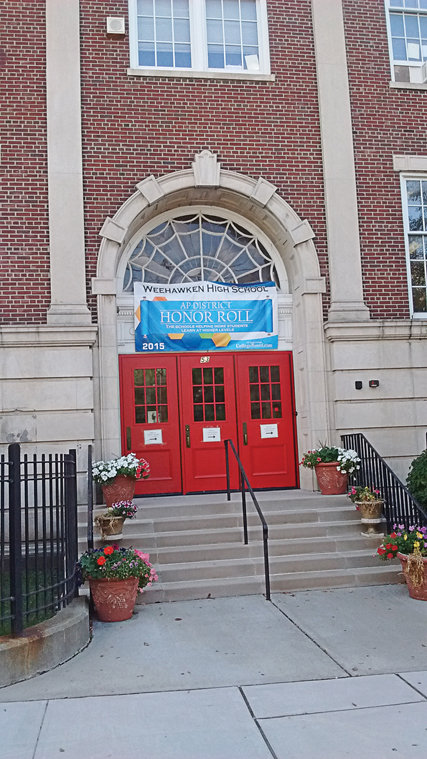In an interview last week, Weehawken Superintendent of Schools Dr. Robert Zywicki talked about his plans to bring the public schools into the 21st century and beyond this year, including making sure every student starting in third grade has access to his own laptop computer.
“When I got here, there was a virtual dearth of use of computers, use of laptops,” Zywicki said last week. “So one of the things that we moved very aggressively on was to get Chromebooks from grades three through 12. On September 1, we are going to be a one-to-one district, which means we have enough devices for every student in the district.”
Faculty also underwent training to better understand the incoming upgrades: “We had 110 teachers come in over the summer, 78 of whom took a Google certification course,” Zywicki added.
As of now, the schools are set to open in September.
“We’re going full-steam ahead with blended learning. Our entire math curriculum, from grades three to 12, is an online blended learning platform called Mathspace,” Zywicki said. “On the turn of a dime, we’ve gone from being very low technology to being a cutting-edge, one-to-one technology-infused blended learning district.”
Zywicki, who is also implementing a multi-year strategic plan to improve the district, has ensured each school has changes as well.
Taking care of trout
The Pre-K-2 Daniel Webster School, for instance, will debut a bio-resource engineering, project-based learning experience in which students will hatch and take care of trout before releasing them. They’ll even meet with the state biologist.
Webster will also have a visual math instruction program named ST Math and online blended world language program Middlebury Language. The latter means “at the same time in class, I may be learning Spanish, the ESL student is learning English,” Zywicki said. “The program, it’s about language acquisition, not just focusing on one language, but language acquisition in general.”
This year, Webster students will go home with Standards-Based Report Cards, which buck traditional number and letter grades in favor of explaining students’ “mastery of the standards” to parents.
WHS Principal Anthony Colasurdo noticed the changing demographics of the district.
____________
Theodore Roosevelt School students (grades three through six) will see a new instrumental music program, learn basic coding skills via Code.org, use the above-mentioned Mathspace program, and play an educational version of the Minecraft video game through a Minecraft lab.
Weehawken High School students will encounter the AP Capstone program to prepare them for college. That addition will feature, per Zywicki, a “slew of new AP courses,” along with debuting AP programs outside the Capstone realm, including AP Microeconomics, AP Macroeconomics, AP Computer Science, AP World History and much more.
The school will also have a S.T.E.A.M lab and a robotics engineering team, and “they’ll be competing so that they compete just like an athletic team, but they’re the robotics team.”
To that end, the district is also continuing to expand its tennis and track sport additions from last year, though they currently lack capacity for new sport teams.
Demographics are changing
For WHS Principal Anthony Colasurdo, who has worked in the district for the past 45 years, “I’ve never seen the district this excited” for the upcoming year.
“The administration has been reorganized to be, I think, many more times effective than it’s ever been,” he said. “We’ve been participating in workshops along with the teachers; we’ve been out talking to the people in the community. When I first started teaching, there were 1,100 students in this building alone. We had triple sections-kids started at 7:30 in the morning because Secaucus kids came to our school [they didn’t have a high school of their own].”
And back then, “the waterfront was crumbling, in decline.” But now, with new development and considerable population growth, Colasurdo noticed a growth in students at Webster, during his principal stint there.
Today, he works to do his part to prepare his high school students for “whatever they choose to do after school.”
At the end of the day, though, it’s all about the tech for the district. “At every level of instruction,” Zywicki said, “technology’s going to be fully infused in a completely different manner than ever before.”
